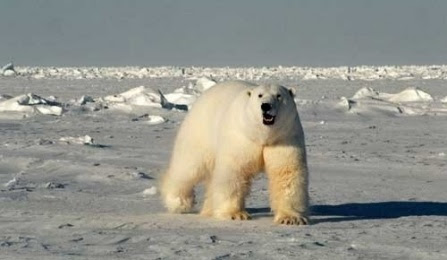Ever wonder how Polar Bears stay warm in such frigid temperatures? Well with recent research it has proven that not only have polar bears been able to adapt to their environment, but so has their genes. In this news article, genomic researcher Charlotte Lindqvist, found that polar bears have a gene function which produces Nitric Oxide. For those of you that do not know the role of nitric oxide production, it is a very good signalling molecule. It allows for the cells of the polar bears to convert their food source into energy. For these polar bears, the energy source that they get from Nitric Oxide is heat. According to Charlotte Lindqvist , this is known as adaptive thermogenisis, and it is very useful to these animals. This mechanism is great for the harsh and cold wintry conditions in which these animals have to withstand. Research proved that the genes in brown and black bears differ from the genes of a Polar Bears, and that is why brown and black bears have to hibernate during the winter months. They differ from all the other bear species because this Nitric Oxide production gene that allows the polar bears to undergo adaptive thermogenisis, lacks in brown and black bears.There are a great amount of genes that can convert food source into energy,but to be able to produce heat as their main energy source is what makes theses polar bears so different and interesting.This genetic discovery in polar bears is fascinating to me , and it answers the question, as to why polar bears can stay warm. With that said, I can conclude that polar bears have gone through adaptation, specifically genetic adaptation. Genetic adaption can be defined as a mechanism that changes so that it is more suitable for the subject of interest, and that is exactly what happened to the polar bears. Adaption is key to all living things, and these Polar Bears have seemed to have mastered it!

I had always known that polar bears had to find a way to adapt to colder temperatures if they were to survive. I just thought they might of had thicker fur than other bears, had a different way to store fat for later use, or that they had a slower metabolism rate requiring less food for energy and that was why they were thriving in freezing temperatures. It never occurred to me that a gene function that produces nitric oxide would be the reason for their success. If nitric oxide makes the food they consume convert to heat, it would be interesting to know what the cons of this adaptation are. Aso,nitric acid is often found in workout supplements which is quite interesting.
ReplyDelete